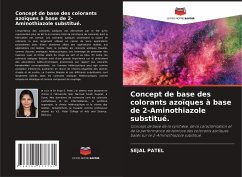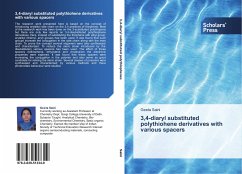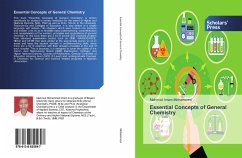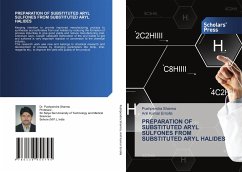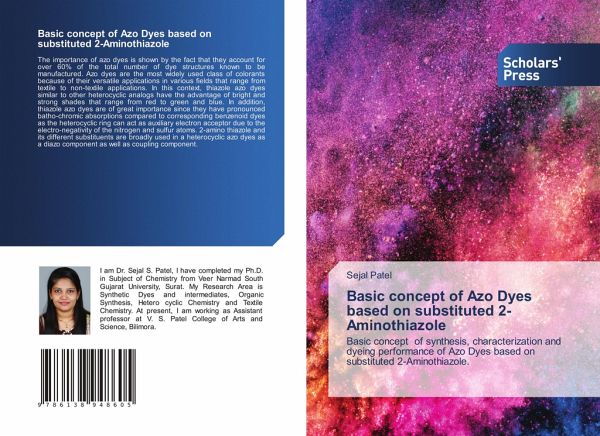
Basic concept of Azo Dyes based on substituted 2-Aminothiazole
Basic concept of synthesis, characterization and dyeing performance of Azo Dyes based on substituted 2-Aminothiazole.
Versandkostenfrei!
Versandfertig in 6-10 Tagen
40,99 €
inkl. MwSt.

PAYBACK Punkte
20 °P sammeln!
The importance of azo dyes is shown by the fact that they account for over 60% of the total number of dye structures known to be manufactured. Azo dyes are the most widely used class of colorants because of their versatile applications in various fields that range from textile to non-textile applications. In this context, thiazole azo dyes similar to other heterocyclic analogs have the advantage of bright and strong shades that range from red to green and blue. In addition, thiazole azo dyes are of great importance since they have pronounced batho-chromic absorptions compared to corresponding ...
The importance of azo dyes is shown by the fact that they account for over 60% of the total number of dye structures known to be manufactured. Azo dyes are the most widely used class of colorants because of their versatile applications in various fields that range from textile to non-textile applications. In this context, thiazole azo dyes similar to other heterocyclic analogs have the advantage of bright and strong shades that range from red to green and blue. In addition, thiazole azo dyes are of great importance since they have pronounced batho-chromic absorptions compared to corresponding benzenoid dyes as the heterocyclic ring can act as auxiliary electron acceptor due to the electro-negativity of the nitrogen and sulfur atoms. 2-amino thiazole and its different substituents are broadly used in a heterocyclic azo dyes as a diazo component as well as coupling component.










